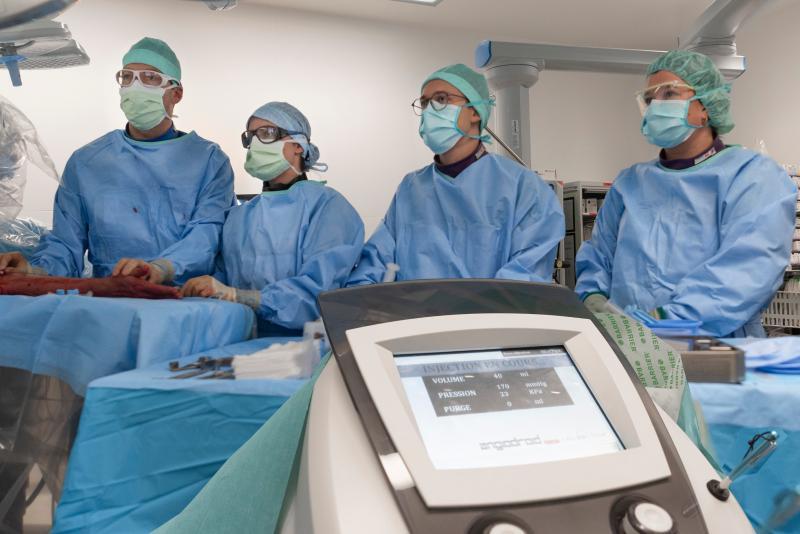Italian medical company develops new kidney health care device to make century-old techniques safer and more successful
Angiography has been around since the 1920s, and while there have been many refinements in its use as a tool to examine the state of blood veins and arteries, the basics have remained the same.
A contrast agent — typically an iodine-based dye — is injected in the patient’s veins. This makes the blood “visible” to X-rays and allows for imaging. This allows doctors to see obstructions or other irregularities.
But there is a drawback. Iodine-based dyes can cause kidney damage, or nephropathy. Sometimes there can be an allergic reaction. For patients who already have damaged kidneys, angiography using iodine-based dye is especially risky. Contrast-induced nephropathy is reported to be the third most common cause of hospital-acquired acute kidney failure.
A less-risky alternative
With about 100,000 people getting angiograms each day in Europe alone, the issues arising from iodine-dye use are significant. There are alternatives, but until now, they’ve been inaccessible and sometimes risky. An Italian start-up called Angiodroid wants to change that. The company created an alternative that avoids the risk inherent in iodine-based dyes.
“We developed the first automatic injector for the use of CO2 in angiography,” says Lorenzo Casadei, the company’s business development and marketing manager. “It's simple, digital, and safe, and doctors can use it without any kidney damage to their patients.”
The gas has been used as a contrast agent before, but that use was complicated by the fact that, using the available techniques, it was difficult to administer and carried its own risks — such as the accidental injection of air into a vein, which unlike CO2 can be dangerous.The Angiodroid device avoids these problems.
The concept emerged in 2011. The first prototypes were developed in collaboration with the University of Bologna at the S. Orsola Hospital, with the Department of Experimental, Diagnostic and Specialty Medicine. The device allows for very precise control of the injection of the CO2 into the patient. The gas itself consists of tiny bubbles that quickly dissipate and are absorbed into the patient’s blood soon after the imaging is completed.The company was founded in 2013, and by 2014, 30 of the machines were in use in Italy and other European countries.

A global target for expansion
Now the device is being used in more than 550 hospitals around the world, though most of them are in Europe. More than 60,000 patients have been examined using the device, which has obtained 32 international certifications in addition to the European standard CE approval.
Angiodroid was a finalist in the 2021 Social Innovation Tournament, created by the EIB Institute to help entrepreneurs develop creative solutions for the environment and society. The company has been recognised at other award competitions as well.
The company is in the process of certification in the United States, which represents 35 percent of the global market. China is also a target for future expansion. The main obstacle Angiodroid faces in broader use of its device is familiarity; angiography using iodine-based dyes has been the standard for many decades, and hospitals are reluctant to make a change.
“When we have the opportunity to demonstrate the technology, the medical teams fall in love with it,” Lorenzo says. “The advantages are easy to see. But this is the challenge.”
The company is determined to make the device available to as many patients as possible, in the process saving lives and helping patients keep their kidneys as healthy as possible.
“We are confident that this technology will be the standard of care for angiography examinations in the future,” Lorenzo says.
